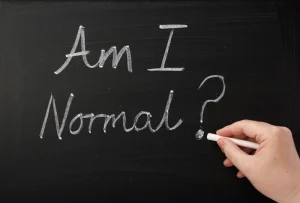
Studies have shown that dopamine disruptions exist in those with ADHD, correlating to the symptoms of inattention and impulsivity. Individuals with ADHD may experience reward and motivation deficits, making them unable to modify their behavior to adapt to changing reward conditions. Yoshimoto K et al., Alcohol stimulates the release of dopamine and serotonin in the nucleus accumbens. Patients with schizophrenia are also highly likely to suffer from alcohol abuse due to their tendency to devalue negative consequences and overvalue rewards [21].
Functional Brain Changes
- A study limitation is that, although our results indicated P/T depletion effects on the brain and behavior, we did not directly measure dopamine or dopamine metabolite levels.
- Instead it has been suggested that OSU6162 produces functionally opposite effects by acting as an antagonist at both presynaptic autoreceptors and postsynaptic D2 receptors [189, 193–195].
- Serotonin plays a role in many brain processes, including regulation of body temperature, sleep, mood, appetite and pain.
- For example, projections from the mPFC to the dorsal striatum have been linked to habitual alcohol drinking and continued use despite negative consequences.
This is also why you can’t seem to remember much of anything after excessive alcohol consumption. Dopamine is a neurotransmitter, a chemical that transmits information and signals between brain cells and then relays that information throughout your body. To put it simply, dopamine is responsible for much of the good we feel and can help regulate our mood, emotions, memory, sensations, and even body functions. A blood alcohol level of 0.08, the legal limit for drinking, takes around five and a half hours to leave your system. Alcohol will stay in urine for up to 80 hours and in hair follicles for up to three months. Warm colors indicate increased connectivity following dopamine depletion, whereas cool colors indicate decreased connectivity following dopamine depletion.
- While data suggest that P/T depletion affects dopamine more than norepinephrine [50, 58, 86, 87], changes to norepinephrine systems could contribute to the effects reported here.
- Collectively, these data suggest that VTA is a heterogeneous area that differs in morphology and topography (for review, see [92]), and the anterior/posterior and lateral/medial part have different functions regarding alcohol and its activation of the mesolimbic dopamine system.
- The initial euphoric effects of alcohol are a result of dopamine being released from the reward center in the brain.
- Many factors probably determine whether GABAA receptors respond to short-term alcohol exposure (Mihic and Harris 1995).
- Thus, any apparent dopamine uptake differences in the male macaque groups presented here are a function of faster clearance times due to decreased dopamine release and not faster dopamine clearance rates per se.
Increased Urination & Dehydration

As part of a collaborative effort examining the effects of long-term alcohol self-administration in rhesus macaques, we examined DS dopamine signaling using fast-scan cyclic voltammetry. We found that chronic alcohol self-administration resulted in several dopamine system adaptations. Following long-term alcohol consumption, male macaques, regardless of abstinence status, had reduced dopamine release in putamen, while only male macaques in abstinence had reduced dopamine release in caudate. In contrast, female macaques had enhanced dopamine release in the caudate, but not putamen. Dopamine uptake was also enhanced in females, but not males (regardless of abstinence state).
How Do Drugs Relate to Dopamine?
The first is Ribose-5-Phosphate which is required for the synthesis of nucleic acids and other complex sugars. The second is nicotinamide adenine dinucleotide phosphate (NADPH) which is required in the assembly of coenzymes, steroids, fatty acids, amino acids, neurotransmitters, and glutathione [61]. The reduction in production of these factors in addition to thiamine deficiency interrupts the cells’ defense mechanisms, notably the ability to reduce reactive oxygen species (ROS), leading to cellular damage. Another mechanism by which thiamine deficiency leads to cytotoxicity is by affecting carbohydrate metabolism leading to the reduction of the enzyme α-Ketoglutarate Dehydrogenase, leading to mitochondrial damage, which in turn induces necrosis [61]. Thiamine requires phosphorylation by thiamine pyrophosphokinase to be converted to its active co-enzyme form. Thiamine pyrophosphokinase is inhibited by alcohol, which also increases the rate of thiamine metabolism [63].


Currently, due to the knowledge of the addictive potential of dopamine agonists, combined with the lack of consistent findings from clinical studies, it is suggested that dopamine receptor agonists do not hold promise as a treatment for alcohol dependence. Evidence suggests that the brain attempts to restore equilibrium after long-term alcohol ingestion (see figure). For example, although short-term alcohol consumption may increase GABAA receptor function, prolonged drinking has the opposite effect (Mihic and Harris 1995; Valenzuela and Harris 1997). This decrease in GABAA function may result from a decrease in receptor levels or a change in the protein composition of the receptor, leading to decreased sensitivity to neurotransmission. Similarly, glutamate receptors appear to adapt to the inhibitory effects of alcohol by increasing their excitatory activity (Tabakoff and Hoffman 1996; Valenzuela and Harris 1997). Additional studies show a compensatory decrease in adenosine activity following long-term alcohol exposure (Valenzuela and Harris 1997).

About Nature Portfolio
Some neurotransmitters produce longer lasting changes, contributing to processes such as learning and memory. Serotonin may interact with GABA-mediated signal transmission by exciting the neurons that produce and secrete GABA (i.e., GABAergic neurons). For example, serotonin can increase the activity of GABAergic neurons in the hippocampal formation (Kawa 1994), a part of the brain that is important for memory formation and other cognitive functions.
Recent Advances in Drug Addiction Research and Clinical Applications

Raphe nuclei neurons extend processes to and dump serotonin onto almost the entire brain, as well as the spinal cord. Serotonin plays a role in many brain processes, including regulation of body temperature, sleep, mood, appetite and pain. Problems with the serotonin pathway can cause obsessive-compulsive does alcohol produce dopamine disorder, anxiety disorders and depression. Serotonin also modulates the behavioral response to unfairness.[48] Most of the drugs used to treat depression today work by increasing serotonin levels in the brain.[49] The image below, shows, the regions of the brain where serotonin reaches [Figure 3].
ReviewAlcohol and the Brain: Neuronal Molecular Targets, Synapses, and Circuits
Decreased levels of dopamine can occur in certain neurodegenerative diseases, such as Parkinson’s disease, wherein the nerve cells responsible for producing and releasing dopamine are dying, Dr. Giordano explains. Conversely, there are also high rates of alcohol-related disorders in psychiatric patients, particularly in those with bipolar disorder and depression when compared to the general population [19], [20]. In this study, it was shown that alcohol dependency comes with a 4-times increase in the risk of developing a major depressive disorder. These alkaloid compounds have been suggested to be responsible for the physiological effects of alcohol as well as the manifestation of the behavioural aspects of alcohol-related disorders.
In addition, those individuals may be predisposed to drink more heavily and develop an alcohol addiction. As a result, people with an alcohol addiction may consume even more alcohol in an unconscious effort to boost their dopamine levels and get that spark back. Dopamine also activates memory circuits in other parts of the brain that remember this pleasant experience and leave you thirsting for more. But over time, alcohol can cause dopamine levels to plummet, leaving you feeling miserable and desiring more alcohol to feel better.
